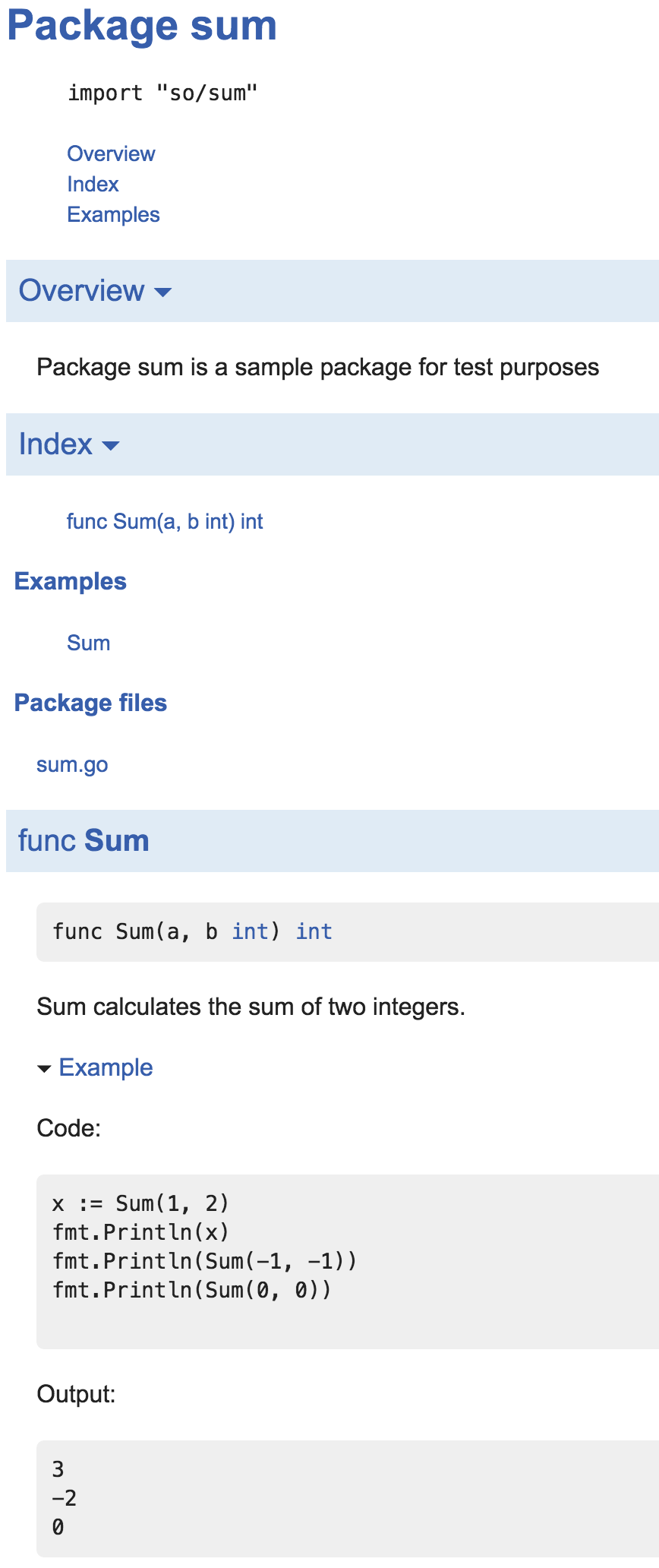Example tests (self documenting tests)
suggest changeThis type of tests make sure that your code compiles properly and will appear in the generated documentation for your project. In addition to that, the example tests can assert that your test produces proper output.
sum.go:
package sum
// Sum calculates the sum of two integers
func Sum(a, b int) int {
return a + b
}sum_test.go:
package sum
import "fmt"
func ExampleSum() {
x := Sum(1, 2)
fmt.Println(x)
fmt.Println(Sum(-1, -1))
fmt.Println(Sum(0, 0))
// Output:
// 3
// -2
// 0
}To execute your test, run go test in the folder containing those files OR put those two files in a sub-folder named sum and then from the parent folder execute go test ./sum. In both cases you will get an output similar to this:
ok so/sum 0.005sIf you are wondering how this is testing your code, here is another example function, which actually fails the test:
func ExampleSum_fail() {
x := Sum(1, 2)
fmt.Println(x)
// Output:
// 5
}When you run go test, you get the following output:
$ go test
--- FAIL: ExampleSum_fail (0.00s)
got:
3
want:
5
FAIL
exit status 1
FAIL so/sum 0.006sIf you want to see the documentation for your sum package – just run:
go doc -http=:6060and navigate to http://localhost:6060/pkg/FOLDER/sum/, where FOLDER is the folder containing the sum package (in this example so). The documentation for the sum method looks like this:

enter image description here